

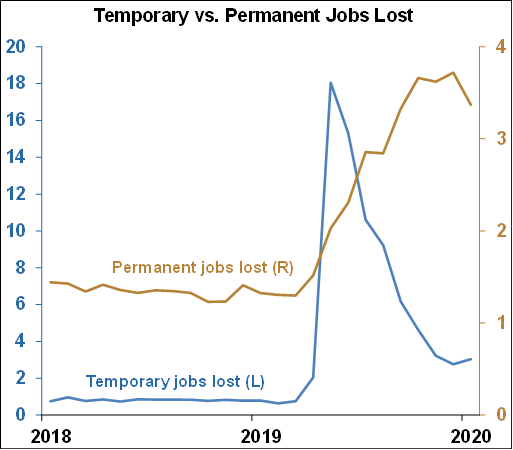
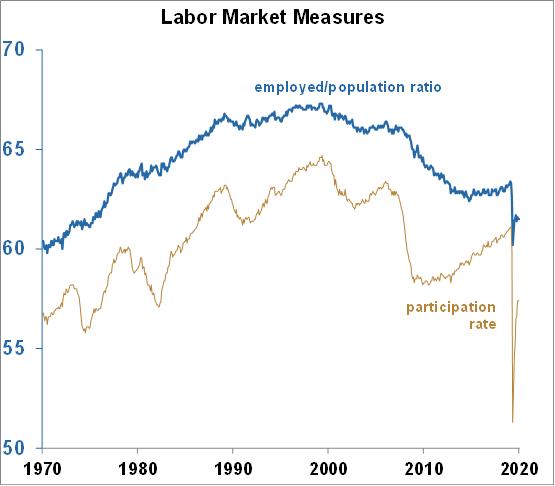
Despite all the negative data, job growth is likely to return in the next few months as long as things go the way we hope. That is that the vaccines will slow the spread of COVID, allowing the economy to open back up. And when it does, there will be a surge in demand for goods and services that will have been pent up for what will have been a deplorably long year.
But the path of COVID and the vaccines are critical to this scenario. Unfortunately, neither of those two are looking very good at the moment. Cases in the U.S. were falling a few weeks ago but are now seeing a rapid resurgence. That could be a result of Thanksgiving gatherings and much colder weather in parts of the country. It’s concerning to think of what Christmas and New Year’s gatherings could do. Here are some charts on COVID itself.


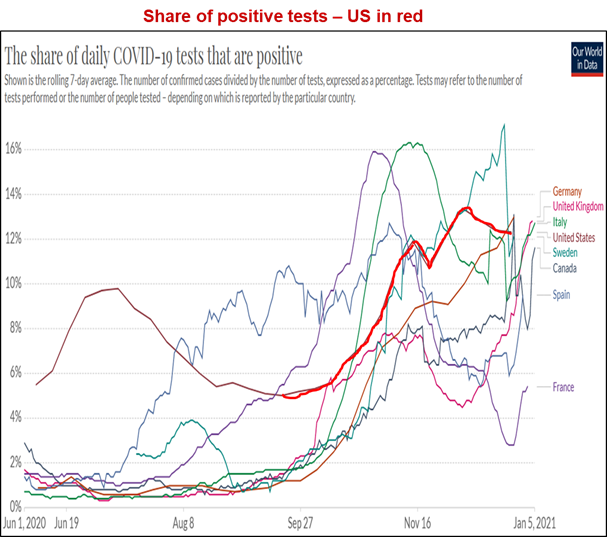

The vaccine development was a miracle, done in 11 months. Typically it takes 5-10 years. Chickenpox took 34 years. There is still no vaccine for HIV after 36 years. The fastest previous major vaccine was for mumps and took 4 years. But the COVID vaccine rollout needs to speed up.
So let’s look at how the rollout is going. The first chart shows that the U.S. has administered 5.92 million doses – more than any other country.
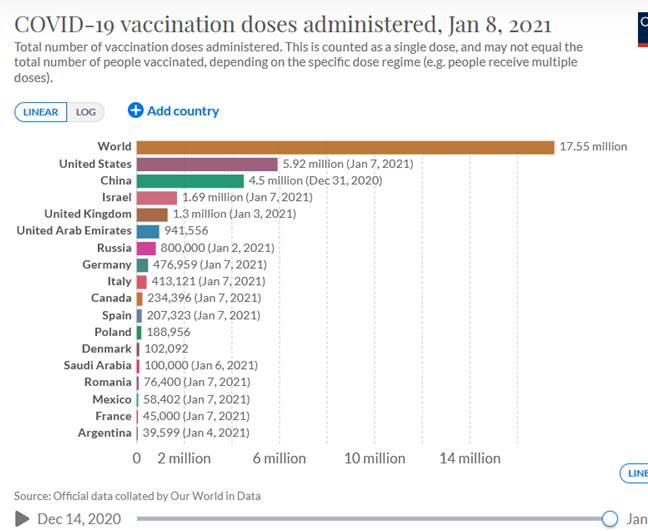

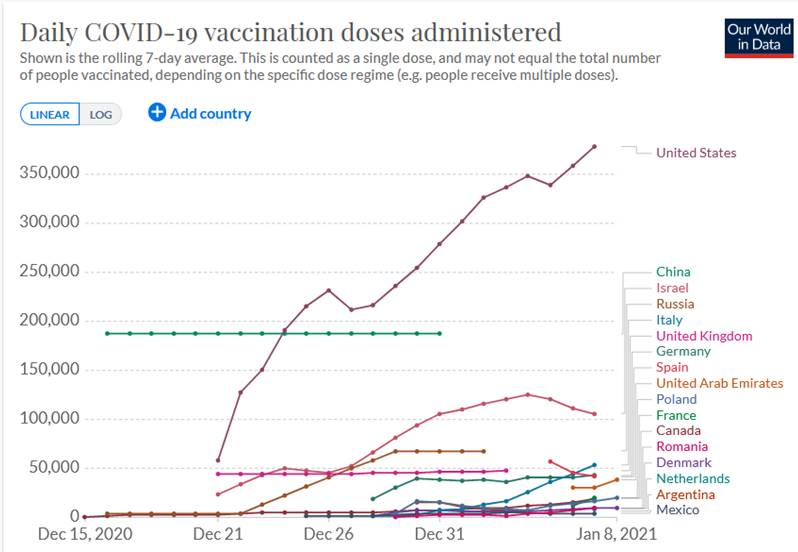
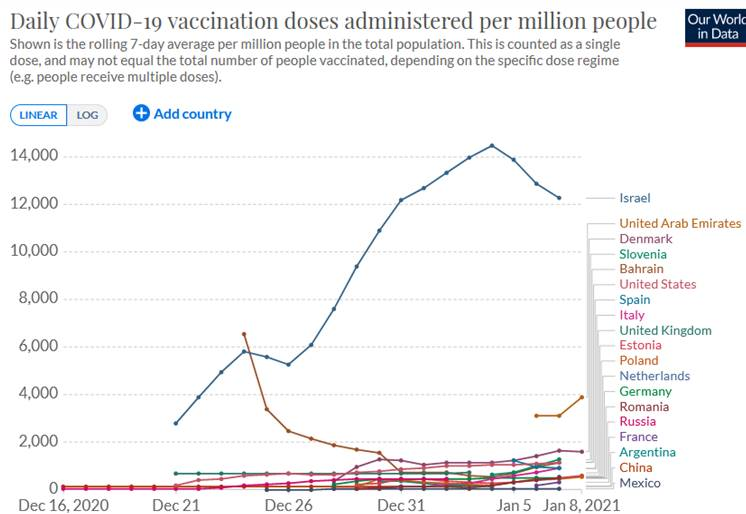
Our big problem is that we have enough doses for now, but we can’t administer them fast enough. Only 31% of the doses delivered have been administered. There are multiple reasons why:
- First, this operation has been running for less than a month. And it included Christmas and New Year’s. Of course it’s starting slowly. And compared to other countries we really aren’t performing too poorly.
- The need for ultra-cold temperatures creates a bottleneck.
- Lack of staff to administer shots. Cases and deaths are at all-time highs, staff have to attend to the sick.
- Distribution and administration plans vary across states.
- Unlike the flu vaccine, people in some States must sign up to be vaccinated, creating extra administrative burdens.
- Providers are leaving vaccines on shelves rather than giving them to people who aren’t in the current priority group.
- Many States have reserved vaccine doses for nursing homes and long-term care facilities, slowing distribution.
- There is a lack of federal funding.
- The U.S. is the world’s 3rd largest country in term of population and area - it takes more time to get to everybody.
The map and the list show the percentage of the doses which have actually been administered, again averaging 31%.
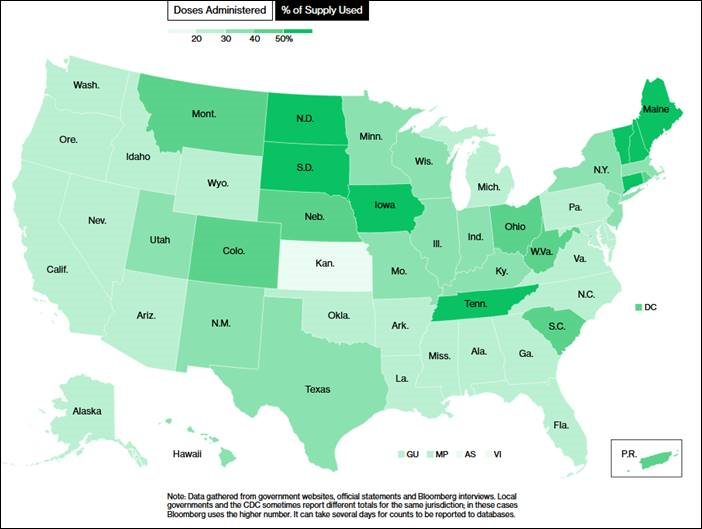
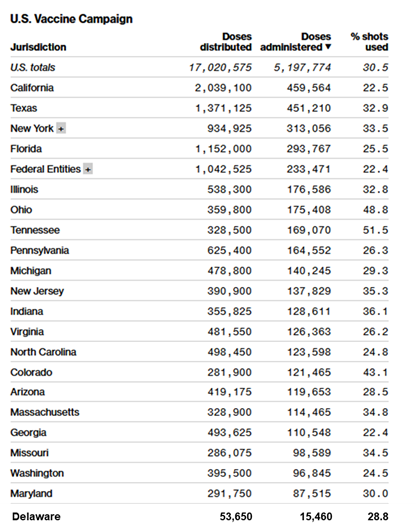
But why has Israel been so successful?
- Centralized chain of command
- In Israel, all citizens over the age of 18 are required to register with one of the country’s four HMOs in a highly digital system that coordinates with national and local governments.
- Army medics used when needed.
- Israel was an “early bird” in launching negotiations with drug makers and securing undisclosed large amounts of vaccine doses.
- It’s a very small country (149 out of 200) with a relatively small population (95 out of 200).
So how long will it take us to get “there” – to herd immunity? Here are some calculations which assume that we need 75% of the population to get 2 shots to reach herd immunity. I’m not a health expert and I don’t know if those assumptions are good ones, but the exercise is useful nonetheless. The first column shows that at the current rate of 378,253 shots given per day, it will take us 3.6 years to reach herd immunity. However if today (January 8th) we were to ramp up the rate to 2,000,000 shots per day, we could reach herd immunity in 0.7 years. In a rare bit of optimism, I am hopeful that we can do this.


In summary, we lost jobs in December 2020 because of increasing COVID restrictions, and we may lose more in the coming months, but we do expect a rebound in H1 as immunizations ramp up and the weather gets warmer. In the meantime, COVID is surging, putting hospitals under stress, highlighting the need for more rapid administration of the vaccines. We have just started in the past month, so we are not up to speed, but we’re getting faster all of the time and some problems will surely be solved.
But remember, we didn’t even have a vaccine just two months ago. Can you imagine looking at all those grim charts without the hope provided by a vaccine actually in use? It’s been a tough start to a New Year for sure and we have a ways to go, but the outlook is hopeful.
Get economic & trade content in your inbox
Sign up for our newsletters to make sure you don't miss anything.
















